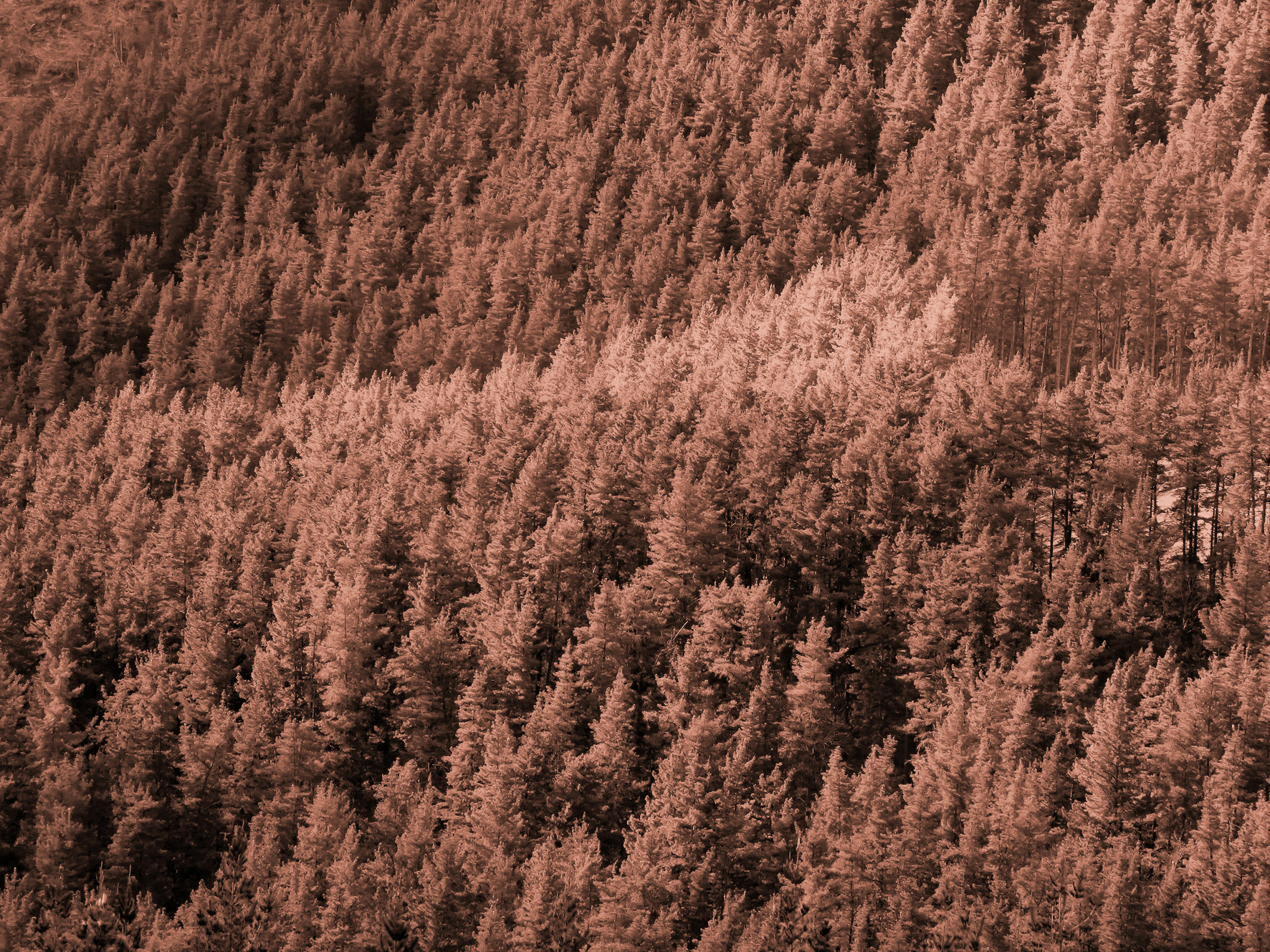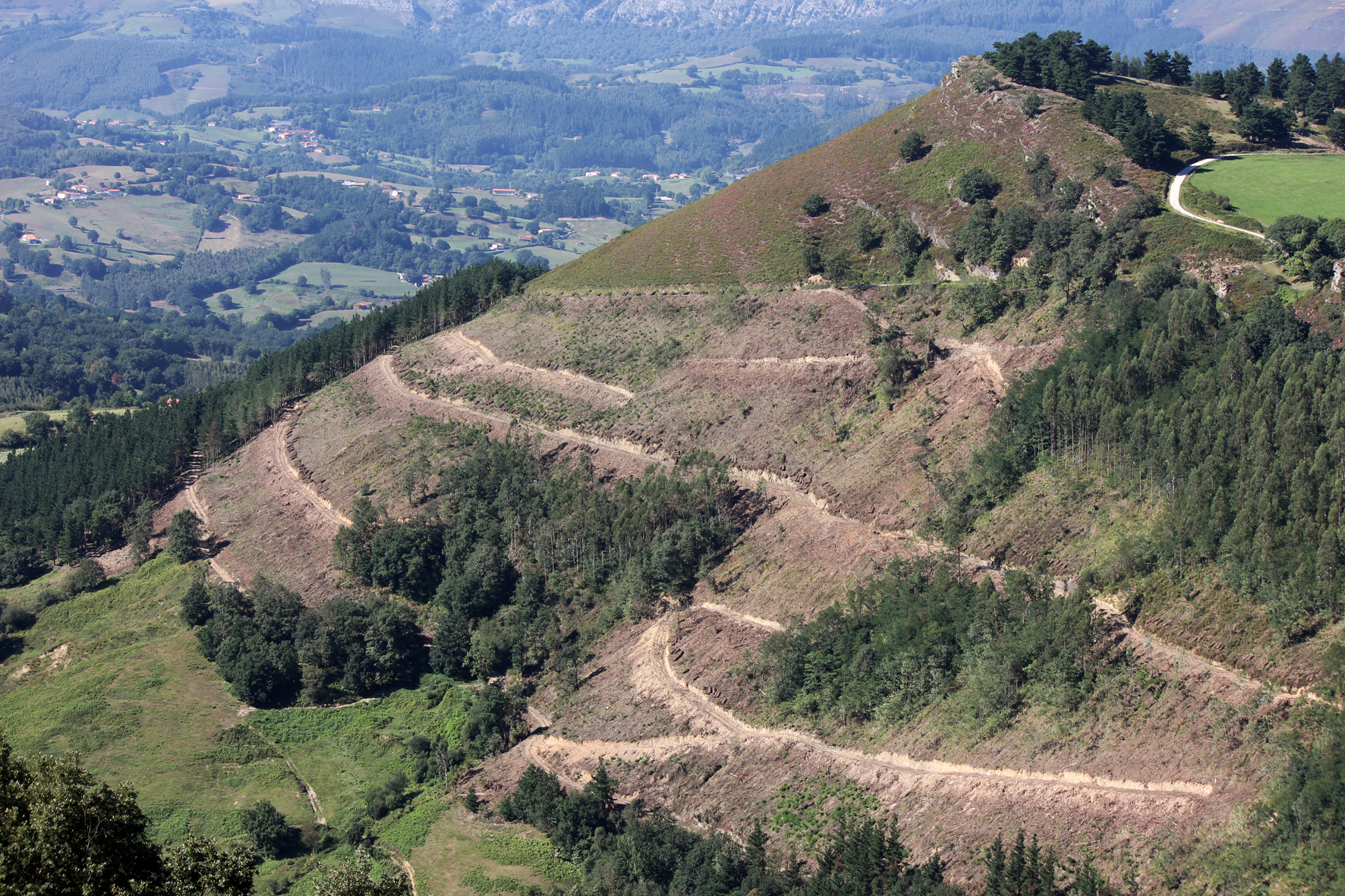Basque ethnography at a glance

Infected pine forest. Sergio Fernández.
Over the 20th century a dramatic transformation of the landscape took place in Bizkaia and Gipuzkoa. Our mountains were gradually covered by vast forests of insignis or radiata pine (Pinus radiata), a species native to the west coast of North America. The complex reasons for such a radical transformation are associated to large-scale privatization of the commons, a purely economic vision, and above all, the abandonment of agricultural and farm activities. As the rural world lost its traditional function, pine farming took on a dominant role; furthermore, it generated plentiful benefits, not in vain foresters proudly called it their ‘green gold’.
But we can no longer shut our ears to the sound of alarm bells going off. The fungus Lecanosticta acicola, responsible for brown spot needle blight, is ravaging monoculture plantations of pine. Certain early signs of infections were identified in recent times, leading to a more virulent outbreak in the spring of last year. Without any truly effective measures to eradicate the disease, we hoped a harsh winter would help stop the spread of it.
The new scenario might have strong implications for the radiata or insignis pine, the species par excellence in the forestry sector here in Bizkaia to this day. The big question is to know what species of trees shall be grown next, with eucalyptus having every chance of being the chosen alternative. Should that be so, our country might become a second Galicia, and be next to experience the consequences of it. Ongoing discussions concerning the case are endless.

Logging routes. Luis Manuel Peña. Labayru Fundazioa Photographic Archive.
And yet there is relatively little discussion of the methods used in timber extraction, as though the present practices ought to be maintained in perpetuity. Our local forestry industry is based on the Finnish model, featuring thirty- to forty-ton vehicles, suitable for Finland’s sandy plains. Here, where steep slopes and clayey soils abound, forest logging machinery, including cut-to-length processors, harvesters, skidders and automatic log loaders, is becoming more and more sophisticated in the name of progress. And instead of machines for operation on flat ground being adapted to sloping sides, mountain tops are removed and easily accessible plains built. With an increase in the density of tracks and logging routes, not one square metre of forest shall be spared from exploitation, which inevitably leads to huge loss of fertile land and rivers turning brown.
Pines might be replaced by eucalyptus trees and rotation lengths reduced from thirty five years to twelve, and ever-increasing numbers of forestry equipment might thus take over our woods. And even if eucalyptus were not planted, the enormous quantity of diseased trees should necessarily be removed and replaced, so one way or another, forests shall be dominated by heavy machinery. What is certain is that browning of pine needle is most likely to result in river browning.
Sergio Fernández – carrantia.com
Translated by Jaione Bilbao – Ethnography Department – Labayru Fundazioa

